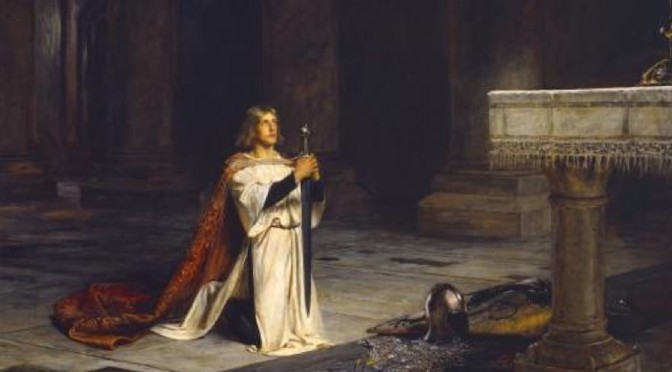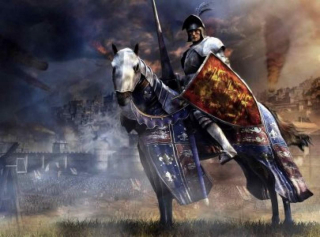 Victory agains the FranksKings, Dukes, Counts worked within a feudal system which had both strengths and weaknesses. Its strength was the simplicity of hierarchical governance. This however led to a lack of uniformity, each Comte and Baron was able to interpret the law and influence religious beliefs in the area in which they exerted control.They then became prepared to bargain and to take arms to protect on extend their independence.
[/tab]
[tab title=”The Barony”]
Victory agains the FranksKings, Dukes, Counts worked within a feudal system which had both strengths and weaknesses. Its strength was the simplicity of hierarchical governance. This however led to a lack of uniformity, each Comte and Baron was able to interpret the law and influence religious beliefs in the area in which they exerted control.They then became prepared to bargain and to take arms to protect on extend their independence.
[/tab]
[tab title=”The Barony”]
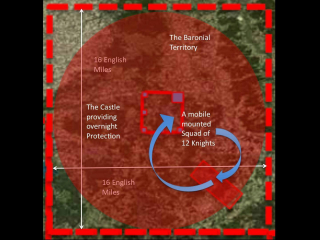 There was a formula for all this which dictated the size of a Barony. A baron was entitled to raise an army of 12 Knights which enable control to be exerted over an area 16 miles square.The Barony was the basic unit of the Feudal System. There was a specific formula which dictated the size of a Barony, though minor changes could be made to cater for local geography. A Baron was entitled to raise an army of twelve knights which was considered to make it possible to control an area 16 miles square, (256 Square Miles).
[/tab]
[tab title=”The Knights Ride Out”]
There was a formula for all this which dictated the size of a Barony. A baron was entitled to raise an army of 12 Knights which enable control to be exerted over an area 16 miles square.The Barony was the basic unit of the Feudal System. There was a specific formula which dictated the size of a Barony, though minor changes could be made to cater for local geography. A Baron was entitled to raise an army of twelve knights which was considered to make it possible to control an area 16 miles square, (256 Square Miles).
[/tab]
[tab title=”The Knights Ride Out”]
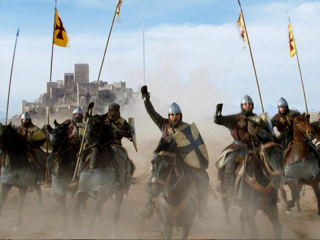 Each day the nights would ride out to enforce the baron’s will and each night return to the security of the barons castle.Each day the knights would ride out to enforce the Baron’s will, assist the Church in administering the law and each night return to the security of the Barons castle.
[/tab]
[tab title=”Changing Allegiances”]
Each day the nights would ride out to enforce the baron’s will and each night return to the security of the barons castle.Each day the knights would ride out to enforce the Baron’s will, assist the Church in administering the law and each night return to the security of the Barons castle.
[/tab]
[tab title=”Changing Allegiances”]
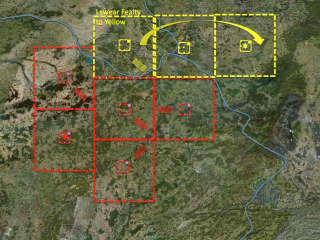 The change in alignment might be simply because a better offer.It was possible for a Baron to shift allegiance from one count to another. Far more significantly a Duke could shift allegiance to a different king. The Counts owing allegiance to the Duke would then have a difficult decision, to move with the duke or to break away and support the king who had been abandoned.
[/tab]
[tab title=”Independence”]
The change in alignment might be simply because a better offer.It was possible for a Baron to shift allegiance from one count to another. Far more significantly a Duke could shift allegiance to a different king. The Counts owing allegiance to the Duke would then have a difficult decision, to move with the duke or to break away and support the king who had been abandoned.
[/tab]
[tab title=”Independence”]
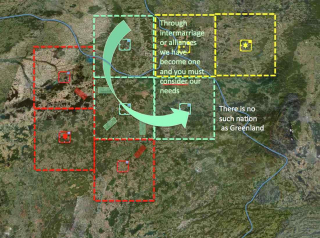 Depending on local alliances and often on intermarriage an independence movement could gather strength.It was also possible for several counts to band together and declare independence. Depending on local alliances and often on intermarriage an independence movement could gather strength.
[/tab]
[tab title=”What is a nation”]
Depending on local alliances and often on intermarriage an independence movement could gather strength.It was also possible for several counts to band together and declare independence. Depending on local alliances and often on intermarriage an independence movement could gather strength.
[/tab]
[tab title=”What is a nation”]
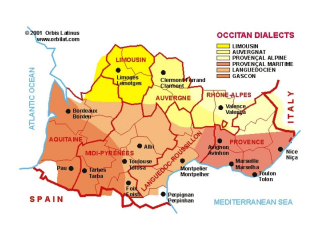 Without doubt Occitan was a candidate for nationhood. If people have a common language, share beliefs and culture; live in an area identifiable by significant natural boundaries and are willing to bond together for mutual defence, then they have the right to claim nationhood. At the start of the twentieth century, in many parts of the world, this is still a problematic definition. In the south west of Mainland Europe there was and still is such a people. Over an enormous area, more than half of present day France, they spoke, and still speak, a different language than that spoken by the Franks. The whole area is still known by the generic title of Occitan.
[/tab]
[tab title=”Papal Intervention”]
Without doubt Occitan was a candidate for nationhood. If people have a common language, share beliefs and culture; live in an area identifiable by significant natural boundaries and are willing to bond together for mutual defence, then they have the right to claim nationhood. At the start of the twentieth century, in many parts of the world, this is still a problematic definition. In the south west of Mainland Europe there was and still is such a people. Over an enormous area, more than half of present day France, they spoke, and still speak, a different language than that spoken by the Franks. The whole area is still known by the generic title of Occitan.
[/tab]
[tab title=”Papal Intervention”]
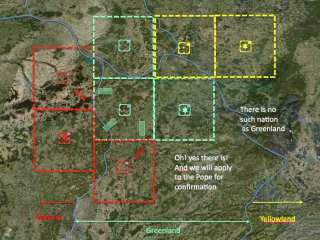 Eventually a plea to the Pope could result in a new kingdom being recognised. Eventually a plea to the Pope could result in a new kingdom being recognised. By the early 14th century Scotland and Aragon had both taken this route. Occitan had intended to follow in AD 1200, and did then switch allegiance from the franks to Aragon, but the Lords and Counts were swept away by the Albigensian Crusade. Occitan’s problem was that its culture and beliefs were different from and unacceptable to the Church of Rome.
[/tab]
[/tabs]
Eventually a plea to the Pope could result in a new kingdom being recognised. Eventually a plea to the Pope could result in a new kingdom being recognised. By the early 14th century Scotland and Aragon had both taken this route. Occitan had intended to follow in AD 1200, and did then switch allegiance from the franks to Aragon, but the Lords and Counts were swept away by the Albigensian Crusade. Occitan’s problem was that its culture and beliefs were different from and unacceptable to the Church of Rome.
[/tab]
[/tabs]
 Victory agains the FranksKings, Dukes, Counts worked within a feudal system which had both strengths and weaknesses. Its strength was the simplicity of hierarchical governance. This however led to a lack of uniformity, each Comte and Baron was able to interpret the law and influence religious beliefs in the area in which they exerted control.They then became prepared to bargain and to take arms to protect on extend their independence.
Victory agains the FranksKings, Dukes, Counts worked within a feudal system which had both strengths and weaknesses. Its strength was the simplicity of hierarchical governance. This however led to a lack of uniformity, each Comte and Baron was able to interpret the law and influence religious beliefs in the area in which they exerted control.They then became prepared to bargain and to take arms to protect on extend their independence.
The Barony was the basic unit of the Feudal system. There was a specific formula which dictated the size of a Barony. A Baron was entitled to raise an army of twelve knights which it was considered enabled control to be exerted over an area 16 miles square.
Each day the knights would ride out to enforce the baron’s will and each night return to the security of the barons castle.
It was possible for a Baron to shift allegiance from one count to another. Far more significantly a Duke could shift allegiance to a different king. The counts owing allegiance to the duke would then have a difficult decision, to move with the duke or to break away and support the king who had been abandoned.
It was also possible for several counts to band together and declare independence. Depending on local alliances and often on intermarriage an independence movement could gather strength.
Without doubt Occitan was a candidate for nationhood. If people have a common language, share beliefs and culture; live in an area identifiable by significant natural boundaries and are willing to bond together for mutual defence, then they have the right to claim nationhood. In the south west of Mainland Europe there was and still is such a people. Over an enormous area, more than half of present day France, they spoke, and still speak, a different language than that spoken by the Franks. The whole area is still known by the generic title of Occitan.
Eventually a plea to the Pope could result in a new kingdom being recognised.By the early 14th century Scotland and Aragon had both taken this route. Occitan had intended to follow this route in AD 1200, and did then swear allegiance to Aragon, but the Lords and Counts were swept away by the Albigensian Crusade.
Occitan’s problem was that its culture and beliefs were different from and unacceptable to the Church of Rome.
